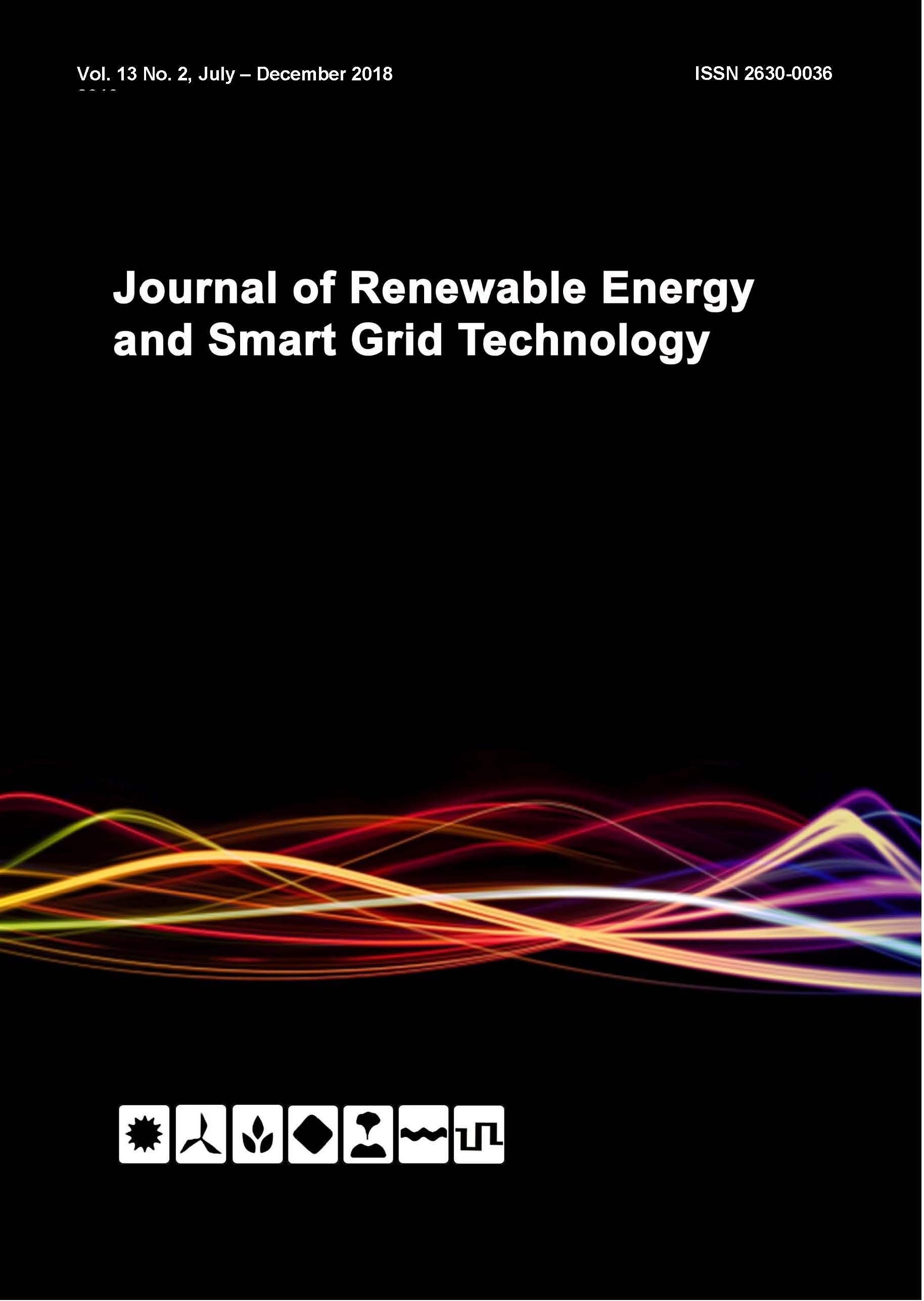Energy and GHG Saving Potentials of Air Conditioners in a Typical Commercial Building using Adaptive Controller
Keywords:
Air conditioner; electrical Energy; Energy management; Adaptive controller; Banking hall; GHG emissionAbstract
In this paper, adaptive data driven controller is utilised to manage energy consumption of Air Conditioner (AC) in a typical commercial banking hall with the aim of reducing electrical energy consumption as well as reduce the carbon emission. The controller has regulatory capability in such a way that the ACs working mode is made to follow the number of occupants and the ambient temperature (time of the day) within the banking hall. In this way, energy consumptions of the ACs are automatically reduced in the time of few customers and cloudy days (low ambient temperature). For effective design of the controller, two sets of primary data (number of people in banking hall per hour and hourly environmental temperature) are collected at a typical commercial banking hall. An algorithm is thereafter developed in java environment and implemented to control the output of the ACs based on the two data sets. Economic and environmental benefits of the proposed controller are also performed. The result reveals that for the typical banking hall an estimation of electrical energy of about 37.2% to 58.2% could be saved using the proposed controller. Moreover, an estimated 2193.84 litres of diesel fuel with the corresponding cost of about $1382.12 could be saved per annum. This cumulates into a saving in CO2 emission of about 5923.368 kg/yr and CO emission of 16.8048 kg. The study is important as the proposed controller can be built into the thermostat of ACs to make it responsive to the number of customers and the ambient temperature.
References
[2] L. D & R International, 2011 Buildings energy data book 2012.
[3] Harish, V.S.K.V. & Kumar, A. (2016) A review on modeling and simulation of building energy systems, Renewable and sustainable energy reviews, 56, 1272-1292.
[4] Zehir, M.A., & Bagriyanik, M. (2012). Demand side management by controlling refrigerators and its effects on consumers, Energy conversion and management, 64, 238-244.
[5] Haghighi, M.M., & Sangiovanni-Vincentelli, A.L. (2011). Modeling and optimal control algorithm design for HVAC Systems in energy efficient buildings, Electrical engineering and computer sciences university of california at berkeley.
[6] Vakiloroaya, V., Ha, Q.P., & Samali, B. (2013). Energy-efficient HVAC systems: Simulation–empirical modelling and gradient optimization, Automation in Construction, Elsevier, 176- 185.
[7] Fasiuddin, M., & Budaiwi, I. (2011). HVAC system strategies for energy conservation in commercial buildings in Saudi Arabia, Energy and Buildings, 43, 3457-3466.
[8] Ferreira, P.M., Ruano, A.E., Silva, S., & Conceic, E.Z.E. (2012). Neural networks based predictive control for thermal comfort and energy savings in public buildings, Energy and Buildings, 55, 238-251.
[9] Ruparathna, R., Hewagen, K., & Sadiq, R. (2016). Improving the energy efficiency of the existing building stock: A critical review of commercial and institutional buildings, Renewable and Sustainable Energy Reviews, 53, 1032-1045.
[10] Ayodele, T.R., & Ogunjuyigbe, A.S.O. (2015). Increasing household solarenergy penetration through load partitioning based on quality of life: The case study of Nigeria, Sustainable Cities and Society, 18, 21-31.
[11] Ayodele, T.R., Ogunjuyigbe, A.S.O., & Babatunde, J.B. (2016). Sustainable electricity generation in rural communities using hybrid energy system: The case study of Ojataye Village, International journal of renewable energy, 11, 43-56.
[12] ASHRAE (1997). Non residential cooling and heating load calculation ASHRAE Fundamentals Handbook.
[13] Porges, F. (2001). HVAC Engineer's handbook (Eleventh ed.): Butterworth-heinemann.
[14] Amada, S. (2016). New Electricity Tariff in Nigeria, Nigerian electricity regulation commission.
[15] Ismail, M.S., Moghavvemi, M., & Mahlia, T.M.I. (2013). Techno-economic analysis of an optimized photovoltaic and diesel generator hybrid power system for remote houses in a tropical climate, Energy conversion and management, 69, 163-173.
Downloads
Published
How to Cite
Issue
Section
License
All copyrights of the above manuscript, including rights to publish in any media, are transferred to the SGtech.
The authors retain the following rights;
1. All proprietary rights other than copyright.
2. Re-use of all or part of the above manuscript in their work.
3. Reproduction of the above manuscript for author’s personal use or for company/institution use provided that
(a) prior permission of SGtech is obtained,
(b) the source and SGtech copyright notice are indicated, and
(c) the copies are not offered for sale.



